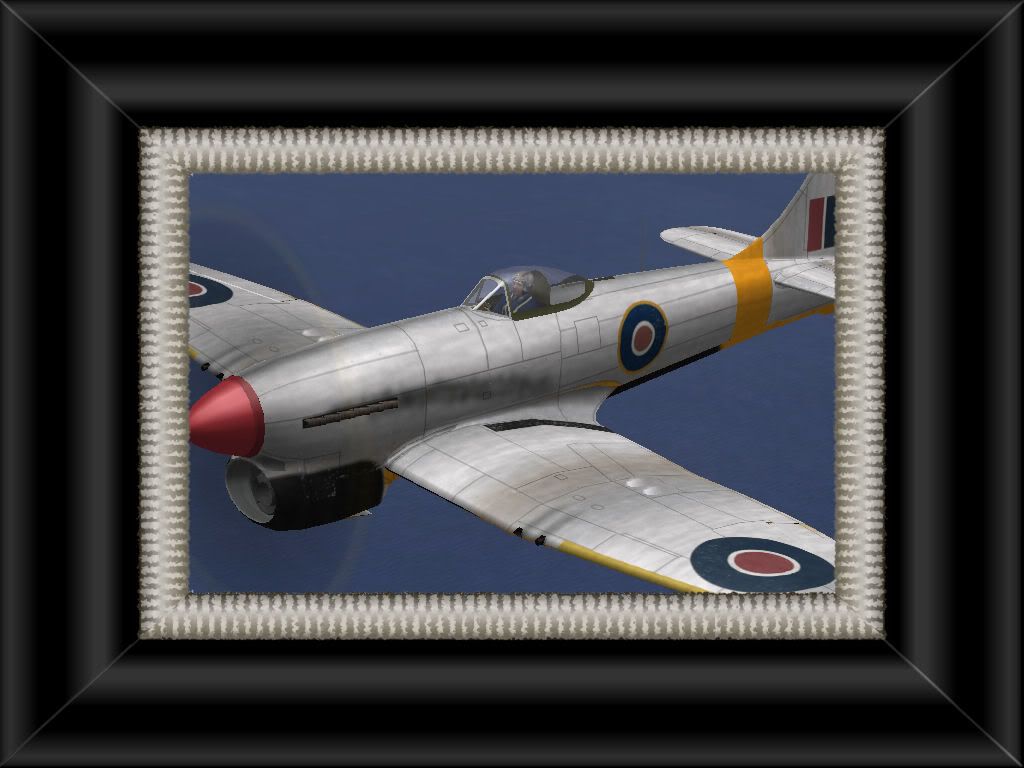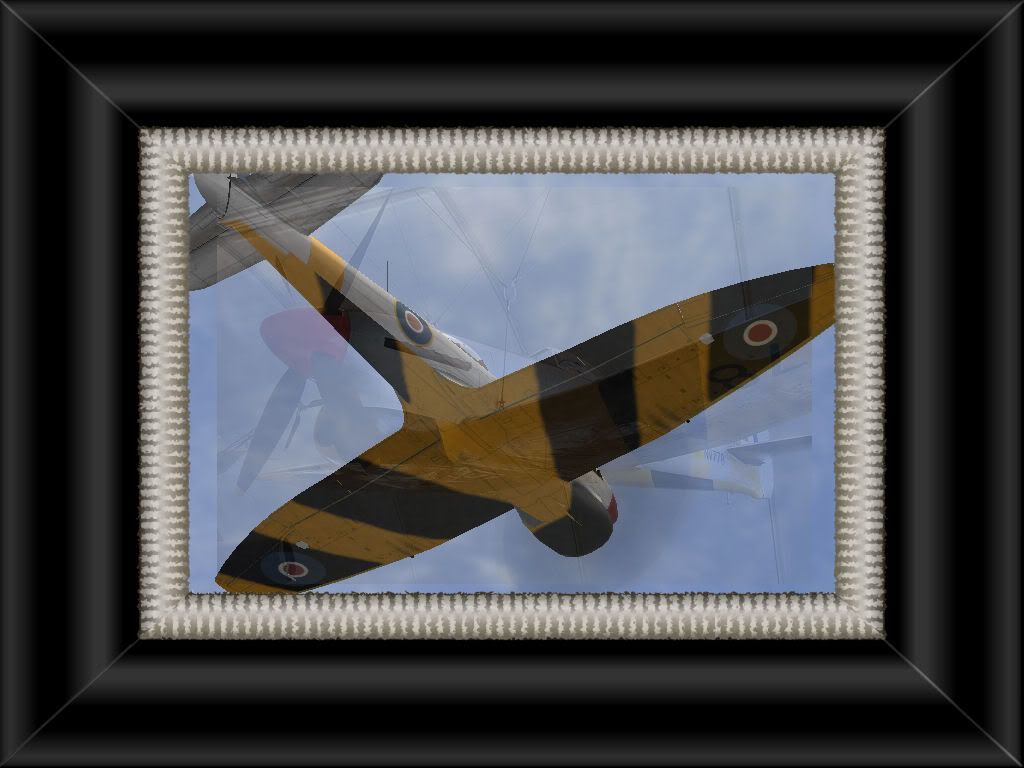


http://www.skinnersheaven.com" onclick="window.open(this.href);return false;
Located in the Milestones of Flight Hall at the Royal Air Force Museum, Hendon is Hawker Tempest V (NV778). This aircraft was on show for many years at Hendon before being removed for extensive restoration in 1991. Now located in the Milestones of Flight Hall, it looks superb in the target tug colours it wore while serving with 233 Operational Conversion Unit (OCU), it's last operational role.
The Hawker Tempest was derived from the earlier Typhoon; in an effort to boost the Typhoon´s performance at higher altitudes, it featured a thinner, smaller wing, an elongated forward fuselage and an enlarged vertical stabilizer. The improvements on the Typhoon, such as the bubble canopy and the flush-mounted Hispano Mk.V cannons, were also integrated. Basically, there were two versions: The Tempest Mk. V powered by a Napier Sabre in-line engine, and the Tempest Mk. II, powered by a Bristol Centaurus radial engine. Both took their time until declared ready for mass production. Especially the Mk. II only really got on the way after studies on a captured Focke-Wulf Fw 190 revealed a solution for the massive problems experienced in cooling a radial engine within a close-fitting forward fuselage..
Eventually, the Tempest Mk. V saw combat from April 1944 on, fighting V-1 buzz-bombs from English bases and then accompanying the advancing allied armies right into Germany. The Tempest Mk. II had been planned for use in the British Tiger Force in the far east, but hostilities ended before that force was deployed. With the general reduction in numbers, many Tempests were retired soon after the war; the RAF used it in limited numbers until 1951 with the advent of the jet fighters. Despite its comparatively short career, the Tempest earns distinction for having been the predecessor of the plane many claim to be the ultimate piston-engined fighter, the Hawker Fury and Sea Fury.

